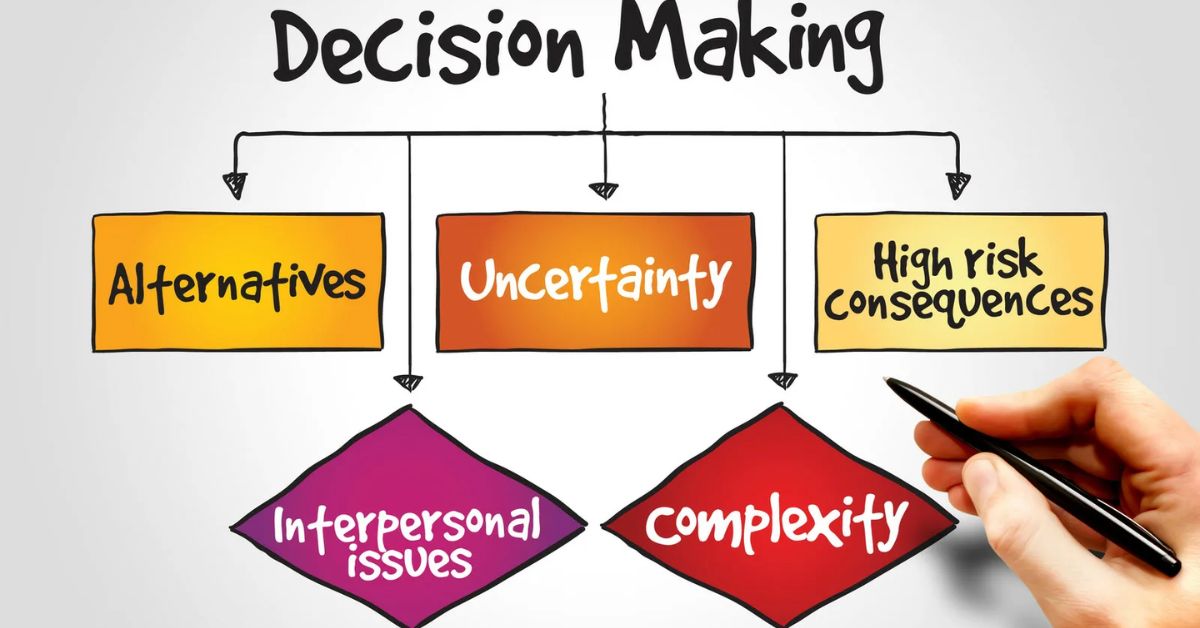In today’s fast paced business environment providing exceptional customer experiences is paramount to success. Companies are constantly seeking ways to simplify processes, reduce friction, and cater to the evolving needs of their customers. One innovative approach that has gained traction in recent years is in house customer financing, a customer centric lending solution that empowers businesses to offer tailored financing options directly to their customers.
This comprehensive guide will explore the concept of in-house customer financing, its benefits, challenges, and best practices for implementation. We’ll delve into the digitization of customer assessment and decision-making processes, examine various models of in-house financing, and discuss the role of digital lending and automation in enhancing the customer experience.
In-House Financing: What’s in the Name?
The house customer financing, also known as in-house lending or merchant financing, refers to the practice of businesses offering financing options directly to their customers, rather than relying on third-party lenders or financial institutions.
This approach allows companies to provide customized financing solutions tailored to their customers’ needs, streamlining the purchasing process and fostering stronger customer relationships.
By integrating financing capabilities into their operations, businesses can offer flexible payment plans, attractive interest rates, and seamless application processes, creating a more convenient and customer-centric experience.
Who Can Benefit from In-House Financing?
In-house customer financing is a versatile solution that can benefit businesses across various industries, including:
- Retail and e-commerce: Retailers can offer financing options for big-ticket items, such as furniture, electronics, or home appliances, making purchases more accessible and increasing customer loyalty.
- Automotive: Car dealerships can provide in-house financing alternatives, enabling customers to secure loans directly through the dealership and simplifying the purchasing process.
- Home services: Companies offering home improvement services, such as roofing, HVAC installations, or renovations, can provide financing options to help customers manage larger expenses.
- Healthcare: Medical practices and healthcare providers can offer financing solutions for costly medical procedures or equipment, making healthcare more accessible and affordable.
- Professional services: Law firms, accounting firms, or consulting agencies can provide financing options for their services, enabling clients to manage cash flow more effectively.
By offering in-house financing, businesses across various industries can enhance customer satisfaction, increase sales, and foster long-term customer relationships.
In-House Financing: How Does the Program Work?
The process of in-house customer financing typically involves the following steps:
- Customer application: Customers initiate the financing process by completing an application, either online, in-person, or through a point-of-sale (POS) system.
- Customer assessment: The business evaluates the customer’s creditworthiness, income, and other relevant factors using automated underwriting processes or manual review.
- Lending decision: Based on the assessment, the business determines the customer’s eligibility for financing, loan amount, interest rate, and repayment terms.
- Contract execution: If approved, the customer signs a financing agreement, often facilitated through e-signature solutions for convenience and compliance.
- Funding and purchase: The business provides the necessary funds or credit line to the customer, allowing them to complete their purchase.
- Repayment management: The business manages the loan repayment process, including collecting payments, monitoring delinquencies, and handling collections if necessary.
Throughout this process, businesses can leverage digital lending technologies, such as online applications, automated underwriting systems, and customer portals, to streamline operations and enhance the customer experience.
Digitization of Customer Assessment and Decision-Making
In the era of digital transformation, the integration of technology into customer assessment and decision-making processes is essential for efficient and customer-centric in-house financing operations. Here are some key aspects of digitization in this domain:
- Online application portals: Businesses can provide user-friendly online platforms where customers can conveniently submit financing applications, upload required documents, and track the application status.
- Automated underwriting: Advanced algorithms and machine learning models can analyze customer data, credit scores, income verification, and other factors to make instantaneous lending decisions, reducing manual effort and improving approval times.
- Data integration: Seamless integration with credit bureaus, identity verification services, and other data sources enables businesses to access comprehensive customer information for more informed decision-making.
- Decision engines: Configurable decision engines and rule-based systems can automate the application of lending policies, ensuring consistent and compliant lending practices.
- Customer portals: Digital portals and mobile apps allow customers to manage their financing accounts, make payments, access statements, and communicate with the lender, fostering transparency and convenience.
By leveraging these digital technologies, businesses can streamline their in-house financing operations, enhance efficiency, and deliver superior customer experiences while maintaining compliance and risk management standards.
Pros and Cons of In-House Financing
Like any business strategy, in-house customer financing presents both advantages and potential challenges. Let’s explore some key considerations:
Advantages of In-House Financing
- Improved customer experience: By offering tailored financing options directly to customers, businesses can create a seamless and convenient purchasing experience, fostering customer satisfaction and loyalty.
- Increased sales and revenue: Providing financing solutions can make products or services more accessible, potentially leading to higher conversion rates and increased revenue streams.
- Competitive differentiation: In-house financing can set businesses apart from competitors, positioning them as customer-centric and innovative providers.
- Customer data and insights: Businesses can leverage customer data and insights gathered through the financing process to improve marketing, product development, and overall customer relationships.
- Control over lending terms: By managing the lending process in-house, businesses can maintain control over interest rates, repayment terms, and lending policies, aligning them with their business objectives and risk appetites.
In-House Financing Downsides
- Financial risk: Businesses assume the risk of default and delinquencies when extending credit to customers, which can impact cash flow and profitability if not managed effectively.
- Regulatory compliance: In-house financing operations must comply with various lending regulations, consumer protection laws, and data privacy requirements, which can be complex and resource-intensive.
- Operational complexity: Implementing and managing in-house financing processes, including underwriting, servicing, collections, and reporting, can add operational complexity and require specialized expertise.
- Capital requirements: Offering financing solutions may require businesses to allocate capital or secure funding sources to support lending activities, potentially impacting their financial position.
- Scalability challenges: As the volume of financing transactions increases, businesses may face challenges in scaling their in-house financing operations efficiently without robust systems and processes in place.
It’s crucial for businesses to carefully evaluate these pros and cons, assess their readiness and resources, and develop strategies to mitigate potential risks and challenges associated with in-house customer financing.
Models of In-House Financing
Businesses can adopt various models for implementing in-house customer financing, depending on their industry, operational structure, and financial capabilities. Here are some common models:
Captive finance company
In this model, businesses establish a separate finance subsidiary or division dedicated to managing the in-house financing operations, including underwriting, funding, and servicing loans.
Third-party lending partnerships
Businesses can collaborate with third-party lenders or financing companies, offering their customers access to pre-approved financing options through a seamless integration with the lender’s platform.
Hybrid model
This approach combines elements of captive finance and third-party partnerships, where businesses manage certain aspects of the financing process in-house while outsourcing others to specialized lending partners.
Peer-to-peer lending
Businesses can leverage peer-to-peer lending platforms to connect customers with individual investors or lenders, facilitating alternative financing options beyond traditional lending sources.
Revolving credit lines
Instead of offering installment loans, businesses can provide revolving credit lines to customers, allowing them to make purchases and repay on a flexible schedule, similar to credit card financing.
The choice of model depends on factors such as the business’s financial resources, risk appetite, operational capabilities, and desired level of control over the financing process.
Do I Need In-House Financing?
Determining the need for in-house customer financing requires a careful assessment of your business objectives, customer demographics, and market dynamics. Here are some key considerations:
- Customer demand: Is there a significant demand from your customers for financing options? Conducting customer surveys, analyzing sales data, and monitoring industry trends can provide insights into customer preferences and financing needs.
- Competitive landscape: Are your competitors offering financing solutions? Implementing in-house financing can help you remain competitive and differentiate your offerings in the market.
- Sales and revenue impact: Evaluating the potential impact on sales, customer acquisition, and revenue growth can help justify the investment in implementing in-house financing.
- Operational readiness: Assess your organization’s operational capabilities, resources, and expertise to manage the
In-House Financing Requirements
To successfully implement an in-house customer financing program, businesses must ensure they meet certain requirements and establish the necessary infrastructure. Here are some key considerations:
Financial resources
Businesses must have sufficient capital or access to funding sources to support lending activities. This may involve securing lines of credit, establishing reserves, or partnering with investors or financial institutions.
Legal and regulatory compliance
In-house financing operations must comply with various lending regulations, consumer protection laws, and data privacy requirements. Businesses should seek legal counsel and stay up-to-date with relevant regulations in their jurisdictions.
Technology infrastructure
Implementing digital lending solutions, such as online application portals, automated underwriting systems, customer portals, and integration with credit bureaus and data sources, is essential for efficient and customer-centric operations.
Underwriting and risk management expertise
Businesses must have the capability to assess creditworthiness, evaluate risk, and develop sound underwriting policies and procedures. This may require hiring or training specialized personnel.
Servicing and collections processes
Establishing robust processes for loan servicing, payment processing, delinquency management, and collections is crucial for managing the lending portfolio effectively.
Data security and privacy measures
Handling sensitive customer data and financial information requires implementing robust cybersecurity measures, encryption protocols, and stringent data privacy policies to protect against breaches and maintain customer trust.
Customer support and education
Providing comprehensive customer support, educational resources, and clear communication regarding financing terms and conditions is essential for fostering transparency and customer satisfaction.
By addressing these requirements and establishing a solid foundation, businesses can effectively implement in-house customer financing programs while mitigating risks and ensuring compliance.
Alternatives to In-House Financing
While in-house customer financing offers numerous benefits, it may not be suitable for all businesses. In such cases, there are alternative financing solutions that businesses can consider:
Direct Financing
Direct financing involves partnering with third-party lenders or financing companies that offer pre-approved financing options to customers. This approach allows businesses to provide financing solutions without managing the lending process in-house. Direct financing can be an attractive option for businesses that lack the resources or expertise to implement their own in-house financing program.
Dealer Financing
In certain industries, such as automotive or equipment sales, businesses can leverage dealer financing programs offered by manufacturers or captive finance companies. These programs provide financing options specifically tailored to the products or services offered by the business, enabling customers to secure loans through the dealer.
Regardless of the financing solution chosen, businesses must prioritize customer centricity by ensuring a seamless and transparent experience, clear communication of terms and conditions, and effective integration with their sales and operational processes.
Digitization of In-House Financing: Another Step Forward
The digital transformation of lending has opened new avenues for businesses to enhance their in-house financing programs. By embracing digital lending technologies, businesses can streamline processes, improve efficiency, and deliver superior customer experiences. Here are some key digitization initiatives:
Online application and e-signature
Enabling customers to apply for financing online and sign agreements electronically can significantly improve convenience and reduce friction in the application process.
Automated underwriting and decision-making
Leveraging advanced algorithms, machine learning models, and decision engines can automate the assessment of creditworthiness, income verification, and lending decisions, ensuring faster turnaround times and consistent application of lending policies.
Customer portals and mobile apps
Providing customers with digital portals and mobile applications can facilitate self-service account management, payment processing, and communication with the lender, fostering transparency and customer engagement.
Data integration and analytics
Integrating with credit bureaus, identity verification services, and other data sources can enrich the underwriting process with comprehensive customer information. Additionally, leveraging data analytics can provide insights into customer behavior, portfolio performance, and risk management strategies.
Process automation and workflow optimization
Implementing automated workflows, document management systems, and integration with existing systems (e.g., CRM, ERP) can streamline operations, reduce manual efforts, and minimize errors.
Artificial intelligence and machine learning
Incorporating AI and machine learning techniques can enable predictive modeling, personalized recommendations, and continuous improvement of lending processes through data-driven insights.
Embracing digital lending technologies, businesses can not only enhance the customer experience but also gain operational efficiencies, improve risk management, and stay competitive in an increasingly digital-driven lending landscape.
Customer Centricity: The Heart of Digital Lending
While technology plays a pivotal role in digital lending, true customer centricity extends beyond mere digitization. It encompasses a holistic approach that prioritizes customer needs, preferences, and experiences at every touchpoint. Here are some key considerations for fostering customer centricity in digital lending:
- Customer journey mapping: Understand the end-to-end customer journey, identify pain points, and design seamless experiences that meet or exceed customer expectations at each stage.
- Personalization and tailored offerings: Leverage customer data and analytics to personalize lending products, communication, and experiences based on individual preferences and behaviors.
- Transparency and clear communication: Provide transparent information about lending terms, conditions, and processes, using clear and understandable language to foster trust and transparency with customers.
- Omnichannel experiences: Offer consistent and integrated experiences across various channels, including online, mobile, and in-person, allowing customers to seamlessly transition between touchpoints.
- Continuous feedback and improvement: Actively solicit customer feedback through surveys, reviews, and open communication channels, and use these insights to continuously improve products, processes, and experiences.
- Empathy and customer support: Cultivate a culture of empathy and provide exceptional customer support, ensuring that customers feel valued and supported throughout their lending journey.
By prioritizing customer centricity and seamlessly integrating digital lending technologies, businesses can create differentiated and memorable experiences that foster customer satisfaction, loyalty, and long-term growth.
Frequently Asked Questions
What do you mean by in-house financing?
In-house financing refers to a financing arrangement where the seller of a product or service extends credit to the buyer directly, rather than involving a third-party lender like a bank.
What is the difference between bank financing and in-house financing?
Bank financing involves obtaining a loan from a bank or financial institution, while in-house financing involves obtaining financing directly from the seller of the product or service.
What is the meaning of home financing?
Home financing generally refers to the process of securing funding to purchase a home, typically through a mortgage loan from a bank or other financial institution.
What is the meaning of home loan in finance?
In finance, a home loan, also known as a mortgage, is a loan provided by a bank or lender to help individuals or families purchase a home.
Conclusion
In-house customer financing has emerged as a powerful strategy for businesses to enhance customer experiences, increase sales, and foster long-term customer relationships. By offering tailored financing solutions directly to customers, businesses can streamline the purchasing process, reduce friction, and cater to the evolving needs of their target audience.
Implementing an effective in-house financing program requires careful consideration of various factors, including regulatory compliance, operational readiness, risk management, and technology infrastructure. Businesses must navigate the pros and cons, assess their organizational capabilities, and choose the appropriate financing model that aligns with their objectives and resources.















